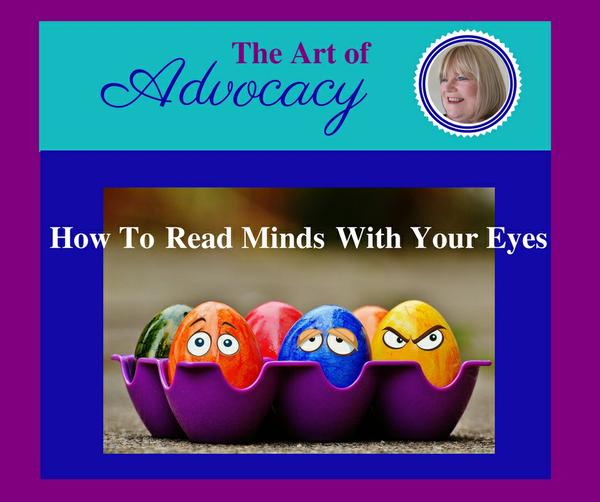Let’s start with total transparency:
I just had to laugh! The irony of this week’s live Facebook show!!! Here I am doing a show about body language and reading people’s minds with your eyes, AND I’m not making eye-contact with my audience! What????
I spent most of the broadcast looking at the wrong camera! Sorry
GOOD NEWS: I have some new clips for my Bloopers Reel.
Now back to our blog post:
Do you agree? What people say can be very different from what they are thinking or feeling.
Have you had conversations with doctors or therapists and wondered what they are really try to say to you?
Have you been in IEP meetings when people’s body language was screaming louder than their words?
What would it be like if you could be more persuasive and win people’s trust? Think about it – how would that impact what services and supports your child gets.
Would you love to know what to do or say when someone is rolling their eyes at you?
Today, in addition to discovering some new secrets of body language, you’ll also get some more details about our upcoming fun IEP Scavenger Hunt: 5 Day FREE Challenge. Hit Reply to this email if you want to sign up for this fun challenge you can do right at home.
And as a bonus, at the end of the blog post I’ll share what to do or say when you’re sitting in an IEP meeting and someone starts rolling their eyes at you.
Let’s get into 3 specific things you can do to better understand the messages people are sending you.
1. Copy the person’s body language and ask yourself how you are feeling when you take on the other person’s body language.
This is an interesting technique. I often forget to try this, but when I’ve done it, it is a helpful way to get more into the feeling level of the person you’re talking to.
2. The signals you send influence how people see you.
Chances are while you’re looking for meaning in others’ body language, they are also evaluating your body language. Think about what message your sending with your body language when you’re in meetings.
3. Watch facial expressions, tone of voice, gestures, and other body language signals.
Just one body cue isn’t a reliable indicator. You need to look for several consistent signals. And remember, many people have learned to “fake” their body language to confuse people.
Here are some common body cues and what they may mean if you see them in combination of similar signals.
